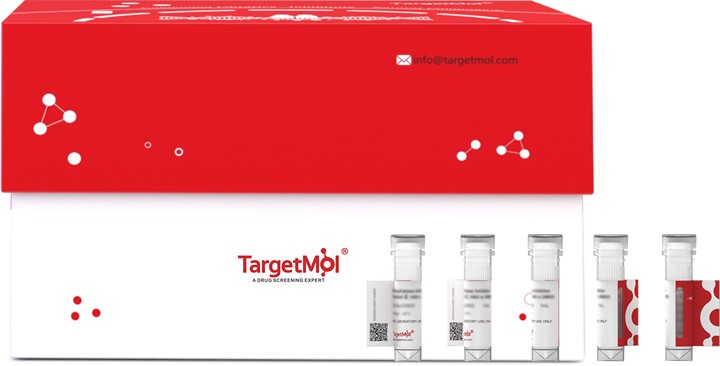- Remove All
 Your shopping cart is currently empty
Your shopping cart is currently empty
Kallikrein 7/KLK7 Protein, Human, Recombinant (aa 23-252, His)
Human Kallikrein 7 is a member of the tissue kallikrein family of extracellular serine proteases that is made up of 15 members. It is predominantly expressed in the skin. A major physiological function of Kallikrein 7 is to regulate the desquamation process (the shedding of corneocytes from the outer layer of the epidermis) through proteolysis of the intercellular adhesive structures between corneocytes. Dysregulation of Kallikrein 7 has been linked to several inflammatory skin diseases including atopic dermatitis, psoriasis, and Netherton syndrome. Studies have shown that Kallikrein 5 is a potential physiological activator for Kallikrein 7. The proform of Kallikrein 7 can be activated by thermolysin.

Kallikrein 7/KLK7 Protein, Human, Recombinant (aa 23-252, His)
| Pack Size | Price | Availability | Quantity |
|---|---|---|---|
| 5 μg | $112 | 7-10 days | |
| 10 μg | $183 | 7-10 days | |
| 20 μg | $292 | 7-10 days | |
| 50 μg | $545 | 7-10 days | |
| 100 μg | $792 | 7-10 days | |
| 200 μg | $1,150 | 7-10 days | |
| 500 μg | $1,900 | 7-10 days | |
| 1 mg | $2,730 | 7-10 days |
Product Information
| Biological Activity | Activity has not been tested. It is theoretically active, but we cannot guarantee it. If you require protein activity, we recommend choosing the eukaryotic expression version first. |
| Description | Human Kallikrein 7 is a member of the tissue kallikrein family of extracellular serine proteases that is made up of 15 members. It is predominantly expressed in the skin. A major physiological function of Kallikrein 7 is to regulate the desquamation process (the shedding of corneocytes from the outer layer of the epidermis) through proteolysis of the intercellular adhesive structures between corneocytes. Dysregulation of Kallikrein 7 has been linked to several inflammatory skin diseases including atopic dermatitis, psoriasis, and Netherton syndrome. Studies have shown that Kallikrein 5 is a potential physiological activator for Kallikrein 7. The proform of Kallikrein 7 can be activated by thermolysin. |
| Species | Human |
| Expression System | HEK293 Cells |
| Tag | C-6xHis |
| Accession Number | AAH32005 |
| Synonyms | Stratum Corneum Chymotryptic Enzyme,Serine Protease 6,SCCE,PRSS6,KLK7,Kallikrein-7,hSCCE,hK7 |
| Amino Acid | Glu23-His252 |
| Construction | Glu23-His252 |
| Protein Purity | Greater than 95% as determined by reducing SDS-PAGE. (QC verified) |
| Molecular Weight | 30 KDa (reducing condition) |
| Endotoxin | < 0.1 ng/µg (1 EU/µg) as determined by LAL test. |
| Formulation | Supplied as a 0.2 μm filtered solution of 20 mM HEPES, 150 mM NaCl, pH 7.5. |
| Stability & Storage | Lyophilized powders can be stably stored for over 12 months, while liquid products can be stored for 6-12 months at -80°C. For reconstituted protein solutions, the solution can be stored at -20°C to -80°C for at least 3 months. Please avoid multiple freeze-thaw cycles and store products in aliquots. |
| Shipping | Shipping with blue ice. |
| Research Background | Human Kallikrein 7 is a member of the tissue kallikrein family of extracellular serine proteases that is made up of 15 members. It is predominantly expressed in the skin. A major physiological function of Kallikrein 7 is to regulate the desquamation process (the shedding of corneocytes from the outer layer of the epidermis) through proteolysis of the intercellular adhesive structures between corneocytes. Dysregulation of Kallikrein 7 has been linked to several inflammatory skin diseases including atopic dermatitis, psoriasis, and Netherton syndrome. Studies have shown that Kallikrein 5 is a potential physiological activator for Kallikrein 7. The proform of Kallikrein 7 can be activated by thermolysin. |
Dose Conversion
Sci Citations
Calculator
Tech Support

Copyright © 2015-2025 TargetMol Chemicals Inc. All Rights Reserved.


